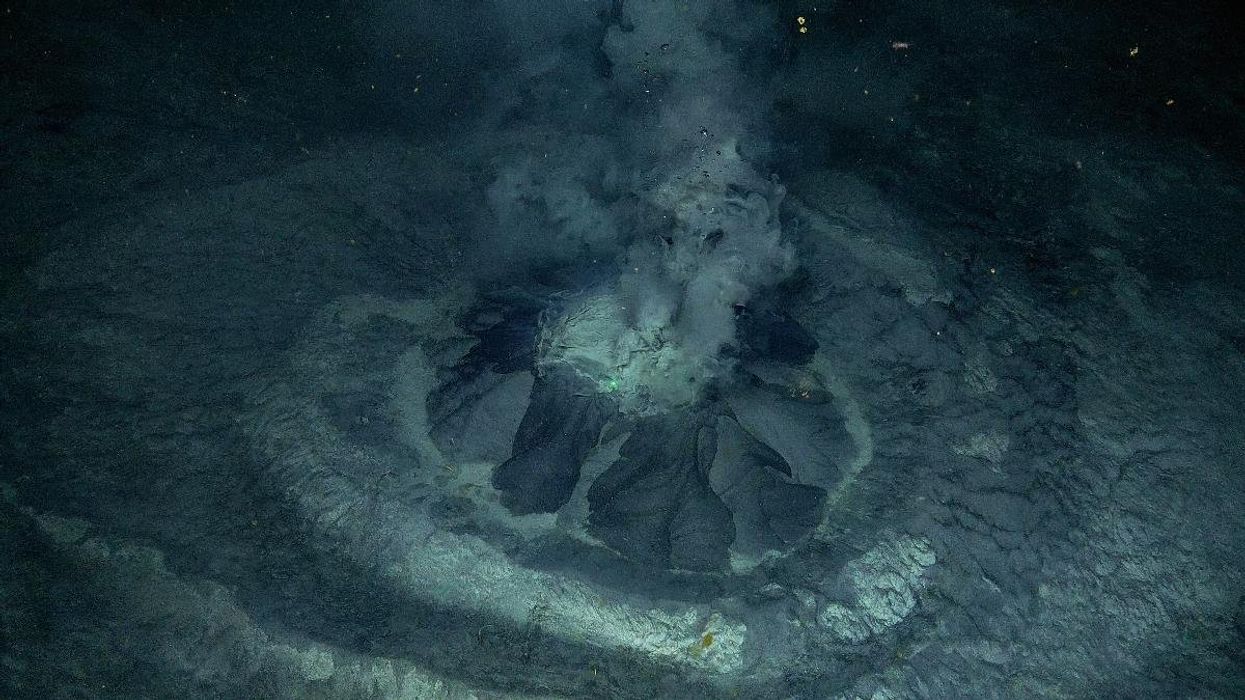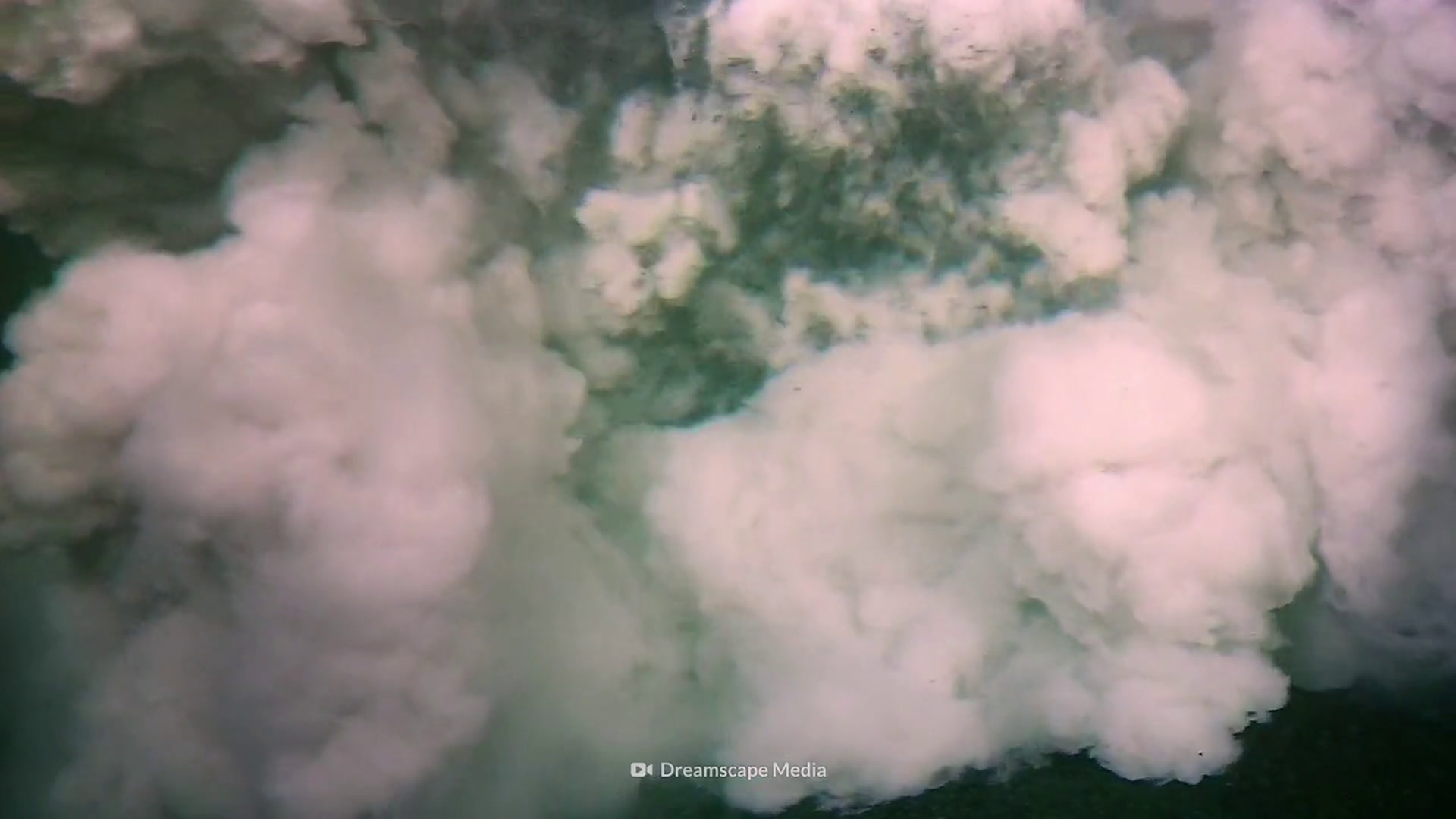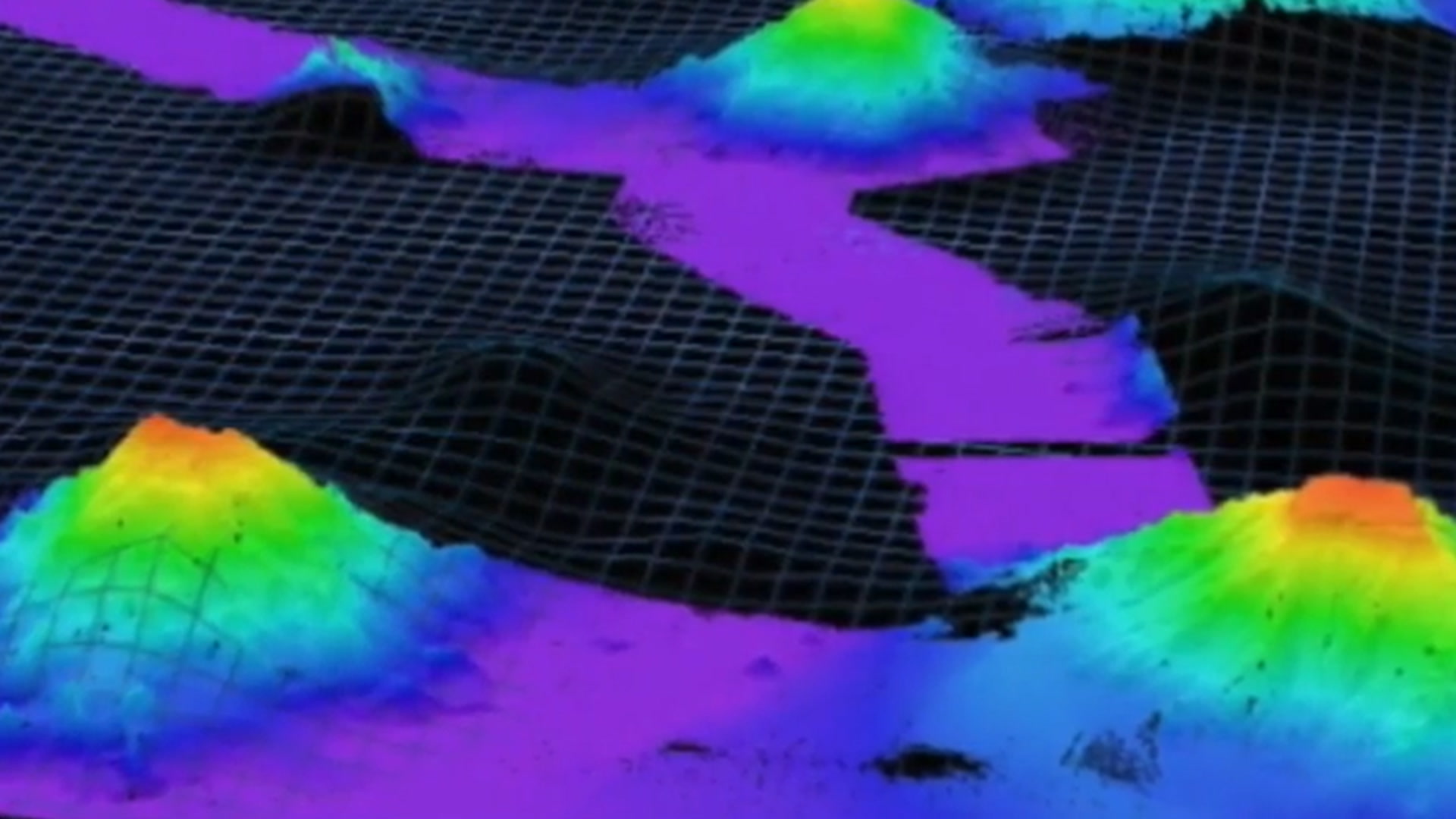Science & Tech
Harriet Brewis
May 18, 2023

Mud volcanoes such as these offer important clues about the Earth's past as well its current inner workings
UiT The Arctic University of Norway
Arctic explorers have uncovered a jaw-dropping blast from the past which they’ve described as a “hidden treasure”.
The discovery was made in the Barents Sea, about 70 miles (113km) south of Norway’s remote Bear Island.
Researchers were exploring the seabed when they spotted a gigantic crater that likely formed at the end of the last Ice Age, some 18,000 years ago.
Within the crater they found a submarine volcano, around 400m (1,310ft) underwater, which is spewing out mud and methane from deep below the Earth’s crust.
Sign up for our free Indy100 weekly newsletter
"Exploring the seabed and discovering new methane seeps is like finding hidden treasures," said Stefan Buenz, of UiT The Arctic University of Norway, who co-led the expedition that unearthed the geological phenomenon.
"Every time we go down to the seabed, we get the feeling that we have just begun to understand the great and incredible diversity of such systems," Buenz added in a statement translated from the original Norwegian.
The only other known mud volcano that exists in Norwegian waters, named the Håkon Mosby, was discovered in 1995. It lies at a depth of 1,250m (4,100ft) on the seabed south of Svalbard.
These peculiar volcanoes serve as direct windows into the Earth's interior since they erupt sediments and water from depths of several hundred metres to a number of kilometres underground.
They also offer clues about previous environments that have existed on Earth.

Understanding the evolution and composition of the liquids helps us understand their potential impact on the global methane budget and can inform what is happening on other planets, according to Professor Giuliana Panieri, expedition leader and principal researcher for the UiT project.
“Seeing an underwater eruption in real time reminds me how alive our planet is,” Panieri added.
The new discovery, which has been named the Borealis Mud Volcano, is most likely the result of a catastrophic, natural blowout that suddenly released massive methane shortly after the last Ice Age.
The crater in which it lies – which measures some 300m (985ft) across and 25m (82ft) – deep hosts a rich seabed life, which thrives on the steep flanks of the carbonate crusts that were formed thousands of years ago, the UiT notes.
This unique habitat includes sea anemones, sponges, carnivorous sponges, starfish, corals, sea spiders and crustaceans, as well as extensive brush land and bacterial mats.

"During this expedition, we discovered that these blowout craters are unique refuges from human impacts, such as trawling for fragile marine animals such as corals and sponges," said participant and REV Ocean Science Director Alex Rogers.
Meanwhile Irena Violan, an Erasmus student at UiT gushed: “As a student who has only seen mud volcanoes on land, it was a fantastic experience to see one on the seabed. You could see the surprise, excitement and joy that spread throughout the team the very moment we saw it on screen.
“My first thought was, ‘I want to get down there and stick my arm in it!’
Have your say in our news democracy. Click the upvote icon at the top of the page to help raise this article through the indy100 rankings.
Top 100
The Conversation (0)













